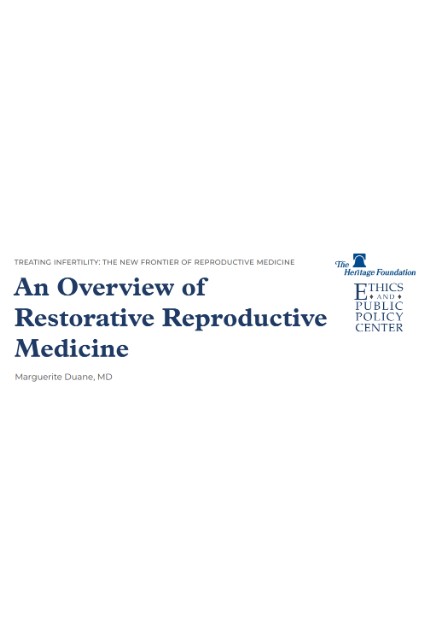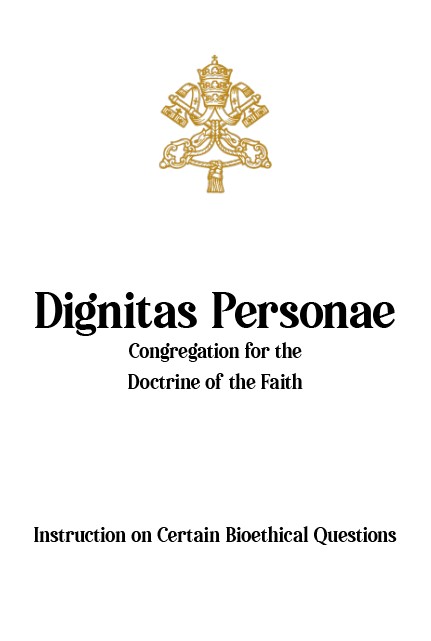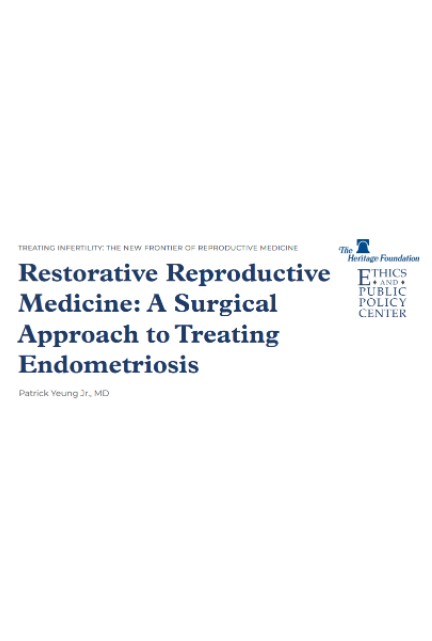Page Summary
- Married couples who struggle with fertility should be given the hope of starting a family, but not if it means treating people like property, which is what IVF does.
- The human being has rights as a person from the moment of conception, which IVF violates in numerous ways.
- IVF also separates the unitive and procreative meanings of the conjugal act. This happens in the opposite way from contraception, but both are wrong.
Is it acceptable to use IVF to have children?
No. IVF and related methods that separate the unitive and procreative purposes of the conjugal act are incompatible with love, and those methods that entail the destruction or permanent freezing of embryos disregard the value of human life.
(Part 1)
Ok, but what does that actually mean?
Listen to this article
“What’s wrong with me?” That question plagued Isabella and James with each negative pregnancy test. When they told their doctor they were having fertility problems, he didn’t ask about what they were going through, he just told them to keep doing what they were doing. After a year of trying to conceive, the doctor still didn’t look into the possibility of any underlying medical problems. Instead, he referred them to an In Vitro Fertilization (IVF)1 specialist. Isabella initially dismissed it, but after a few months of overwhelming grief, she and James were looking for a lifeline. Could IVF be the answer?
IVF is never the answer, but it’s understandable why couples turn to it. They are deeply hurting, and looking for answers that IVF seems to provide.


Yes, but not by any means necessary. Not if it means treating people like property. One option that avoids this problem is an approach to medicine and holistic fertility care that is sometimes called Restorative Reproductive Medicine (or RRM). Within this approach, there are at least three distinct medical models: NaProTECHNOLOGY® (often called “NaPro”), FEMM, or NeoFertility. These approaches aim at addressing any underlying medical problems, such as endometriosis. RRM can restore couples’ natural capacities for having children rather than attempting to fabricate them in a lab.
RRM has also been shown to be more effective and less expensive than IVF.2,3
IVF specialists offer the possibility of children as an object to consumers. When talking about how any object is produced, people tend to use two categories: natural and man-made. Think of the difference between a genuine Christmas tree and a plastic one, or the difference between “real” and “artificial” maple syrup. If someone attempted to sort every object in the world into one of the two categories, it would be easy to sort animals (natural) and cars (man-made),4 but where should humans be sorted? It’s not a question that matters much in other contexts, but IVF makes it more pressing.
On the one hand, humans occur naturally like any other animal. On the other hand, while animals reproduce out of instinct, humans procreate by choice.5 No other natural or man-made object chooses to engage in the activity that results in new objects. And yet, the natural consequences of procreation don’t automatically result every time the necessary steps have been followed. So, when it comes to people, the answer to the question “natural or man-made?” is both… and neither. That’s because human beings are a fundamentally special part of the world to whom “object” categories don’t apply.


The Church recognizes the legitimacy of the desire for a child and understands the suffering of couples struggling with problems of fertility. Such a desire, however, should not override the dignity of every human life to the point of absolute supremacy. The desire for a child cannot justify the ‘production’ of offspring…
Congregation for the Doctrine of the Faith, Dignitas Personae 16
When the ordinary process of procreation fails us, it can be tempting to treat it like any other consumer demand that isn’t met by nature: just come up with an artificial process that retro-engineers the desired object, and charge money for it. This isn’t to say that the desires of couples aren’t born of deep pain. But in spite of their pain and good intentions, the IVF process always reduces the new person to the status of an object. Anyone conceived through IVF is every bit as human and deserving of love as anyone else. As a matter of fact, that’s a major motive for opposing it.


There are two main reasons to oppose IVF.
First, IVF treats the human person like a commercial product that can be deliberately killed, suspended at an early level of development, sold like chattel, or replicated at large scale. The vast majority of IVF cycles involve the fertilization of more than one egg (usually around ten or fifteen of them) in a lab setting. A few or only one of those is selected to be transferred to the mother, with only one being carried to term about half the time, if that. The rest of the fertilized embryos either die in utero, are discarded in the lab as medical waste, or are frozen indefinitely.
Is a fertilized embryo different from any of us?
The egg and sperm separately are not living human beings, but once they unite and become a fertilized zygote, a new human being like us has come into existence. This unique human being soon enters the embryonic stage, followed by the fetal stage, which lasts most of the pregnancy. At every phase, this being has the same value as anyone else, starting from conception.
From a leading embryology textbook

Human development begins at fertilization when a sperm fuses with an oocyte to form a single cell, the zygote. This highly specialized, totipotent cell… marks the beginning of each of us as a unique individual.
The Developing Human: Clinically Oriented Embryology, 116
From the Vatican

Thus the fruit of human generation, from the first moment of its existence, that is to say from the moment the zygote has formed, demands the unconditional respect that is morally due to the human being in his bodily and spiritual totality. The human being is to be respected and treated as a person from the moment of conception; and therefore from that same moment his rights as a person must be recognized, among which in the first place is the inviolable right of every innocent human being to life.
Congregation for the Doctrine of the Faith, Donum Vitae I.1
Second, IVF should be avoided because it separates the procreative meaning of sex from the unitive meaning of sex. This is the opposite of the problem that happens with contraception. Instead of attempting to isolate the unitive dimension and eliminating the procreative dimension, IVF attempts to isolate procreation and eliminate the unitive aspect, at least at the time when IVF takes place. Each person has a right to come into the world as a result of the loving union between their mother and father, not as a commercial product.
If there is any doubt about the attitude of IVF providers toward embryonic human beings, we can consult the Alabama lawsuit that made headlines in 2024. The IVF center, as the defendant in that case, suggested that the embryos were treated as property (see highlighted section of pages 23-24, from LePage v. Center for Reproductive Medicine, P.C.).
Couples and children alike deserve better than IVF.
A first step to understand whether a married couple’s fertility is compromised is to learn a method of Natural Family Planning (NFP). These methods teach couples how to identify their fertile window which can be used for attempting pregnancy.
1) The basics of the IVF process can be found here.
2) “For those 38–40 years old with 2 failed IVF attempts, a live birth rate of 17.5% was found after an additional IVF cycle, while these percentages dropped further to 9.5 and 3.6% for patients of respectively 41–42 and 43+ years old. With RRM, 38–40 year old women demonstrated adjusted life birth rates of 28.1% (crude 14.8%), while this percentage remained high in patients over 40 with an adjusted rate of 27.0% (crude 16.0).” Boyle, Phil C., de Groot, Theun, Andralojc, Karolina M., Parnell, Tracey A. (2018), Healthy Singleton Pregnancies From Restorative Reproductive Medicine (RRM) After Failed IVF. Frontiers in Medicine, 5, https://www.frontiersin.org/journals/medicine/articles/10.3389/fmed.2018.00210 (accessed June 5, 2025).
3) Katz, Patricia, et al. (2011), Costs of Infertility Treatment: Results from an 18-month Prospective Cohort Study. Fertility and Sterility 95(3), https://pubmed.ncbi.nlm.nih.gov/21130988/ (accessed June 5, 2025).
4) I.e. a reconfiguration of natural objects according to a rational design.
5) In unintended pregnancies resulting from non-violent, “consensual” sex, the couple still chooses the cause that can result in conception. Even in violent situations, the perpetrator still chooses to perform the evil action against the victim.
6) Moore, K., Persaud, T.V.N., Torchia, M., The Developing Human: Clinically Oriented Embryology, 11th ed., Elsevier (India: 2020), 11.













